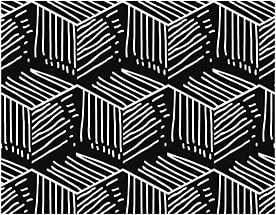
Technology, from artificial intelligence to 3D printing, will propel shopper convenience and product customization to new heights.
Meanwhile, the human touch will be more important than ever, just as the health-and-wellness trend gains a more expansive mind, body, and spirit dimension.
That’s a taste of the consumer trends poised to take shape—and take off—in 2018.
Here, four retail experts dish the seven biggest trends that will define the retail and consumer buying landscape this year—and they offer up actionable intel for your business:
- Consumer trend analyst LISA FEIERSTEIN, of TrendWatching
- WENDY LIEBMANN, CEO and chief shopper at WSL Strategic Retail
- JILL STANDISH, senior managing director of retail at Accenture
- MICHAEL MANDEL, chief economic strategist at the Progressive Policy Institute
TREND 1
A-Commerce

“Advances in artificial intelligence and automation are enabling shoppers to outsource even the simplest of tasks and decision-making to technology,” TrendWatching’s Feierstein tells EB. “In 2018, consumers will look to hand over almost every element of the sourcing, bargaining, purchasing, tailoring, and picking up of products and services.”

What’s more, Finery is a free program that allows shoppers to digitally organize their wardrobes and online shopping carts in one location. “The company connects to users’ email receipts to automatically add fashion purchases to their Finery wardrobe, which then sorts their items by designer, color, type, and more,” Feierstein says.
TREND 2
Wellness, as a Movement

“Health and wellness is one of the few areas that will drive retail growth in 2018 and beyond—this is where U.S. shoppers are willing to spend,” says WSL Strategic Retail’s Liebmann. “This isn’t about sick care; it’s about well care. Millennials want to be well—body, mind, spirit—not get sick and end up in the pharmacy or the hospital. They are preventative, looking for new options, alternatives, from genetic testing to yoga.”
At the same time, “Older shoppers want a healthy lifestyle. It’s reflected in new travel options, fitness, food, having a pet, and more,” she says.

TREND 3
Commerce + Community

People continue to spend more of their shopping dollars on lived moments like eating out, cooking classes, and travel, Accenture’s Standish says, rather than tangible things.

TREND 4
Customized Products via 3D Printing

Advances in the speed, quality, and automation of 3D-printing technology are laying the foundation for the customization of consumer products at scale.
That newfound efficiency will make it easier for manufacturers to offer their shoppers customized, or semi-customized, products, the Progressive Policy Institute’s Mandel says. “Smart companies will take advantage of these opportunities.”

TREND 5
Glass Box Brands

“Brands used to be a black box—it was difficult for outsiders to see what was going on inside,” Feierstein says. “Thanks to constant connectivity and increased information access, brands have now become glass boxes. Consumers can now see your internal operations and pass judgment, especially in light of recent corporate scandals.”
A powerful way to show consumers that your company’s values align with theirs is to make meaningful positive changes to your internal culture, “and then tell the world about them,” she says.

TREND 6
Post-Sale Courtship

Because our economic landscape is hyper-competitive and consumers are less loyal, brands must be nimble and forward-thinking enough to serve shoppers after they’ve closed the sale, says Feierstein. “Consumers are spoiled with honey traps before they make a purchase. But in 2018, brands that serve after a sale, not just before, will earn trust, love, and loyalty.”

“After a customer in Florida requested an upgrade, Tesla automatically unlocked the full battery range of all vehicles that were close to the storm for free and for a limited time,” says Feierstein.
TREND 7
Forget Retail Dazzle, Get the Basics Right

“Everyone is saying that for physical retail to survive it must create a dazzling experience. Wrong,” says Liebmann. “If retailers don’t get the basics right—right product, right place, right now—then even a Disney-style dazzle won’t compensate.”





